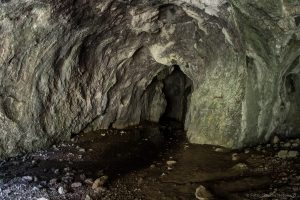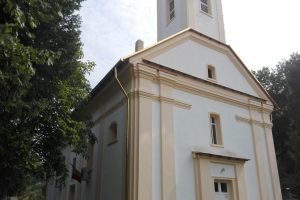

The foundation stone of the church was placed on the 21st of November 2008, having at the base the decision of the Episcopacy of Severin and of Strehaia. The construction started in the year 2012.
The shape of the church is a cross one, being among the few places of worship from the city with this architecture.
Andrew was an apostle of Jesus from Nazareth, brother with Simon Petru. The gospel according to John mentions the fact that Andrew would have been for the first time an apprentice of John the Baptist, who would have recommended him to follow Jesus. According to the same gospel, Andrew would have taken his brother, Simon Petru to Jesus, telling him that he found Messiah. From here comes the characterization of Andrew as “the first called one”.
In the enumerations of the apostles, Andrew is always mentioned among the first four. Despite all of these, he isn’t mentioned among the three whom Jesus treated in some situations as his closest (Peter, Jacob and John).
According to the Gospel according to John, the two brothers, Simon Petru and Andre, were original from Betsaida, a locality situated on the border of the Lake Genezaret. According to the Gospel according to Marcus, they had a house in Capernaum and they were as an occupation fishermen.
The name Andrew comes from the ancient Greek, which was the lingua franca of the Former Orient.
At the Apostle Assembly which took place around the years 49 – 50 A.D at Jerusalem, the apostles met and they drew cuts in order to decide where each of them was going to go. In the Tradition of the Church, to the Apostle Andrew came Scytia (Dobrogea). Firstly, Andrew accompanied his brother (the Apostle Peter) around Asia Minor, then he passed to the Balkan Peninsula through the territory of today’s Turkey, arriving in Scytia, where he stopped for a period of time. Then he continued the mission of preaching the gospel, arriving until the south of today’s Russia.
Around the year 350 the Emperor Constantin the IInd (the son of Constantin the Great) takes the relics of Saint Andrew at Constantinople and places them in the Apostles Church. These are kept whole until around the year 850, when the Byzantine Emperor Vasile I the Macedonian abandons to the wishes of the inhabitants from Patras and gives them back the head of Saint Andrew. In the year 1208, during the Fourth Crusade, the relics arrived at Amalfi, in the proximity of Naples, being kept in the dome San Andrea. In 1462, they were taken to Rome, because of the Turkish danger. In the XVth century Pope Pius the IInd moved the relics of Saint Andrew in Saint Peter Cathedral from Rome. In the year 1964, the head of Saint Andrew was given back to the church from Patras.
He is the guardian of Scotland (the Scottish flag represents the cross of Saint Andrew), of Romania, of Spain, of Sicily, of Greece and of Russia. Also, he is the guardian of the cities Naples, Ravenna, Brescia, Amalfi, Mantua, Bordeaux, Brugge, Patras, etc.
In Romania he is considered to be the one who preached the Gospel on these territories. As testimony stands the toponyms from the area of Dobrogea where he also lived for a period of time. The Saint Andrew Cave, the Small River Saint Andrew are also testimonies which proved the passing of the Apostle on these territories.


